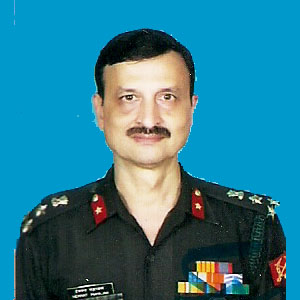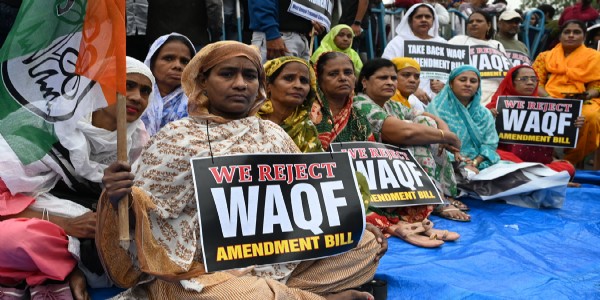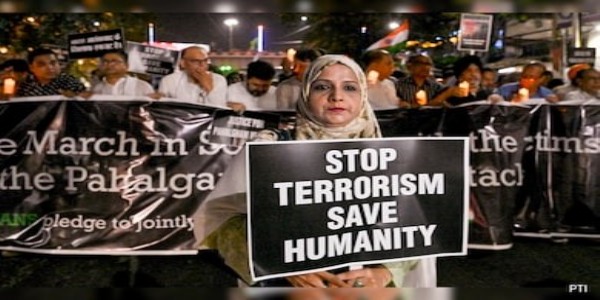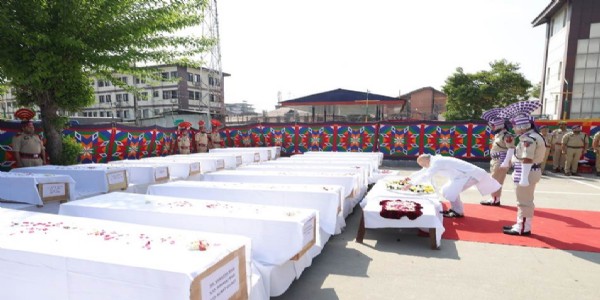Nana Saheb Peshwa II: The Architect of India's First War of Independence Part 1
The function at Bithur highlighted the exceptional leadership demonstrated by Nana Saheb during the 1857–58 India"s First War of Independence.
Total Views | 32
Early Life and Adoption
Shri Shivaji Raigad Smarak Mandal, Ved Vasudev Foundation, Itihas Premi Mandal Pune, Thorle Bajirao Peshwa Pratishthan Pune, along with several organizations from Uttar Pradesh and the Government of Uttar Pradesh, jointly celebrated the 200th birth anniversary of the legendary military leader Nana Saheb II. The event took place at Nana Saheb Peshwa Park in Bithur, near Kanpur, Uttar Pradesh, from March 28 to March 30, 2025.
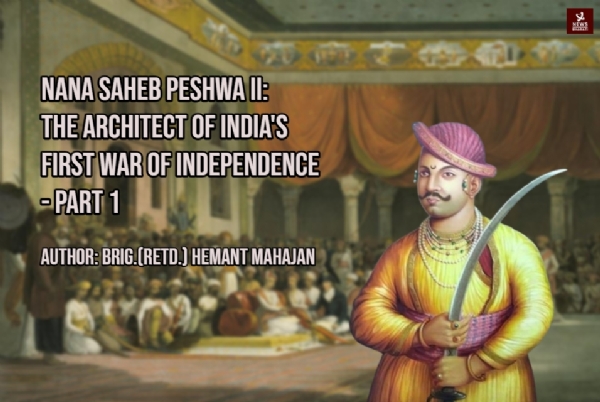
The entire event was coordinated by Shri Sudhir Thorat, Secretary of Shri Shivaji Raigad Smarak Mandal. The function at Bithur highlighted the exceptional leadership demonstrated by Nana Saheb during the 1857–58 India's First War of Independence.
Nana Saheb Peshwa II (19 May 1824 – after 1857), born as Dhondu Pant, was an Indian military leader who played a crucial role in the Indian War of Independence of 1857. He led the Siege of Cawnpore (Kanpur) against the British East India Company.
Following the defeat of the Marathas in the Third Anglo-Maratha War, the British exiled Peshwa Baji Rao II to Bithoor (near Kanpur) but allowed him to maintain a substantial household, partly funded by a British pension. Nana Saheb’s father, a well-educated Deccani Brahmin, relocated from the Western Ghats to serve as a court official for the exiled Peshwa. He later married the sister of one of the Peshwa’s wives, and they had two sons.
Since Baji Rao II had no biological sons, he adopted Nana Saheb and his younger brother, Bala Saheb, in 1827. Nana Saheb grew up alongside prominent historical figures such as Tatya Tope, Azimullah Khan, and Manikarnika Tambe, the future Rani of Jhansi. Tatya Tope, a skilled warrior, served as Nana Saheb’s fencing master, while Azimullah Khan later became his secretary and dewan.
Denial of Inheritance and the Doctrine of Lapse
The East India Company of the British Empire began to expand. The mighty Maratha Empire was finally destroyed in 1818, and states like Bengal, Orissa, Hyderabad and Mysore were also annexed. The British flag was hoisted at Shaniwarwada in Pune.
The British East India Company exercised absolute administrative control over many regions of India and implemented an annexation policy known as the Doctrine of Lapse under Governor-General Lord Dalhousie (1848–1856). This policy allowed the British to annex any princely state if its ruler was deemed "manifestly incompetent" or died without a direct heir. The doctrine ignored the long-standing Indian tradition that allowed rulers to adopt successors, creating widespread resentment.
Although the Peshwa's territories had already been annexed in 1818, before the doctrine was formalized, the British used it to deny Nana Saheb the pension granted to Baji Rao II, as he was an adopted son. Under British rule, Baji Rao II had received an annual pension of 800,000 rupees (£80,000 at the time) and tax-free land grants. However, upon his death, these privileges were revoked.
Nana Saheb made several appeals to the British authorities for the restoration of his pension and estates, but all his efforts were rejected. Frustrated by these repeated failures, he sent his trusted advisor, Azimullah Khan, to London to argue his case before the British government. However, the mission ended in failure, further fueling Nana Saheb’s discontent against British rule.
The following aspects will be covered in this article:-
- Nana Saheb's Role Before the Uprising
- The Outbreak of the War of Independence in Kanpur
- The Consecration of Nana Saheb, British Forces Advance on Kanpur
- Further Battles and British Gains
- Nana Sahib's Escape and British Pursuit, Battle of Bithur and Rebel Counterattacks
- Tatya Tope’s Attempt to Recapture Kanpur
- British Counteroffensive and the Final Defeat of the Rebels
- Contributions to the 1857 War of Independence and Effect on History
- Conflicting Accounts of Death, Aftermath of the Events of 1857
- Inspiring Uprising All Over India, Military Strategy and Conduct
- The Challenge: A Divided India vs a Powerful British Empire
- Nana Saheb’s Legacy in Independent India
- Role in the 1857 War of Independence
When the Indian War of Independence of 1857 erupted, Nana Saheb emerged as a key leader in Kanpur. He assumed command of the rebel forces and laid siege to the British garrison stationed there. After forcing the British troops to surrender, he ordered the execution of the surviving captives, briefly taking control of Kanpur.
Nana Saheb's Role Before the Uprising
Bithoor, located 13 miles northwest of Kanpur, was Nana Saheb’s residence, where he lived in a well-furnished palace inherited from his adoptive father, Peshwa Baji Rao II. He was known for his generosity and frequently hosted British officers earning their trust and goodwill.
In April 1857, Nana Saheb embarked on a tour of nearby cantonments, ostensibly on a pilgrimage. He was warmly received in Lucknow by Sir Henry Lawrence but abruptly cut short his visit and returned to Kanpur. Major General Hugh Massey Wheeler, commander of British forces in Kanpur, trusted Nana Saheb.
Despite reports that Nana was hosting disbanded soldiers from the 19th Native Infantry passing through Bithoor in late April, General Wheeler dismissed any concerns. By May, signs of unrest, including arson attacks, had begun appearing in Kanpur. Several Indians, warned the British about Nana Saheb’s suspected intentions, but the British continued to trust him. He was even invited to participate in discussions regarding the defense of the British cantonments.
The British Misplaced Trust in Nana Saheb
Nana Saheb outwardly expressed loyalty to the British and even offered to protect Europeans in Kanpur. It was agreed that he would raise a force of 1,500 men to counter any rebel attacks should the uprising reach the city. General Wheeler entrusted the Kanpur treasury to Nana’s troops, believing he would safeguard British interests. Confident in the stability of Kanpur, Wheeler even sent a detachment of his forces to reinforce Lucknow.
In preparation for a potential attack, the British had two possible defensive positions:
A fortified magazine with thick walls located three miles upstream, but with limited access to water.
Two large barrack buildings near the road to Allahabad, one made of masonry and the other with a thatched roof, situated near a well.
Despite the superior defenses of the magazine, the British chose the barracks due to the availability of water. However, their defenses were weak—while they had begun constructing a protective wall, it was only four feet tall at the onset of the conflict and was not bulletproof.
The Outbreak of the War of Independence in Kanpur
On 6 June 1857, British forces in Kanpur rebelled against the East India Company, forcing European civilians and troops to seek refuge in the barracks. The British had anticipated that the rebels would march towards Delhi, leaving them unprepared for a prolonged siege.
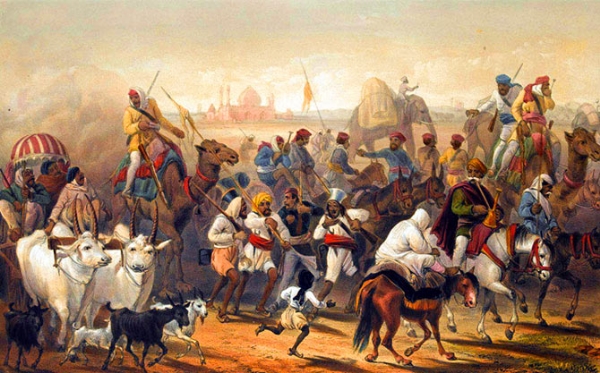
Approximately 900 people, including European and Eurasian civilians, along with Indian soldiers loyal to the British, were trapped inside the barracks. However, only 210 of them were trained British soldiers, supported by about 100 armed civilians. Their defenses consisted of five 9-pounder cannons, one brass 3-pounder, and a mortar.
Nana Saheb and his men took control of the British magazine in Kanpur. The soldiers of the 53rd Native Infantry, stationed there, initially believed that Nana had arrived to protect the arsenal on behalf of the Company. However, on 4 June, sepoys from the 1st, 53rd, and 56th Native Infantry regiments, along with the 2nd Cavalry, mutinied, looted the treasury, and departed for Delhi.
At this point, Nana Saheb formally declared his opposition to the British. With the treasury in his possession, he proclaimed his leadership of the War of Independence and announced his intent to restore the Maratha Confederacy under the Peshwa tradition. He swiftly recruited rebel soldiers by promising to double their pay and reward them with gold. He appointed Jwala Prasad as brigadier of his forces, his elder brother Baba Bhatt as the judge of Kanpur, and Azimullah Khan as the city’s collector.
The Siege of Wheeler's Entrenchment
On 5 June 1857, Nana Saheb sent a letter to General Wheeler, warning him of an attack at 10:00 AM the next day. True to his word, his forces, now numbering between 12,000 to 15,000 men, launched an assault on 6 June at 10:30 AM. The British, caught off guard, held their ground, while Nana’s forces hesitated to enter the entrenchment, fearing hidden mines.
The siege continued for three weeks, during which the British suffered heavily from starvation, heat, and dehydration. On 7 June, the rebels brought in large-caliber artillery and began bombarding the British positions.
During the battle, Nana Saheb’s eldest son, Baan Rao, was killed.
As news of the attack spread, more rebel sepoys joined Nana’s forces. By 10 June, his troops had established strategic firing positions around the British compound. Captain John Moore, one of the British defenders, attempted counterattacks at night, but Nana Saheb responded by moving his headquarters to Savada House, two miles away.
Major Attacks on the British Defenses
On 13 June, the rebels set fire to one of the thatched barracks, which was being used as a hospital. As flames engulfed the building, they launched a charge against the British lines but were repelled by grapeshot(direct artillery gun fire).
Sniper fire and artillery bombardment persisted for days. On 23 June 1857—exactly 100 years after the Battle of Plassey, which marked the beginning of British dominance in India—Nana’s forces launched a major offensive, believing it to be an omen for British downfall. More than 4,000 rebel soldiers stormed the British entrenchment with cavalry and infantry charges. General Wheeler held fire until the cavalry was within 50 yards, then unleashed devastating grapeshot fire. The rebel infantry used cotton bales as cover but failed to breach the British defenses. During the assault, General Wheeler’s son, Gordon Wheeler, was decapitated by a cannon shot.
Meanwhile, in the city, Indians suspected of aiding the British were killed, and sectarian violence erupted. Azimullah Khan managed to partially defuse the situation.
The British Surrender Negotiations
By 25 June, with food and ammunition running critically low, the British were in a dire situation. A Eurasian woman, Mrs. Jacobi, approached the rebels with an offer of surrender. Nana Saheb, through his advisors Azimullah Khan and Jwala Prasad, proposed safe passage for the British to Allahabad in exchange for their surrender.
After much deliberation, General Wheeler accepted the offer on 26 June. The terms allowed the British to leave with their sidearms but required them to abandon their artillery. The events that followed would lead to one of the most infamous incidents of the 1857 uprising.
The Satichaura Ghat Massacre-The British Departure from the Entrenchment
On the morning of 27 June 1857, the British forces and civilians, primarily unarmed men, women, and children, emerged from their entrenchment in Kanpur. Following negotiations with Nana Saheb, arrangements had been made for their departure to Allahabad. Nana Saheb provided carts, dolis, and elephants to transport the women, children, and the sick to the riverbanks. While Company officers and military personnel were permitted to carry their arms and ammunition, they were escorted by a large contingent of rebel sepoys.
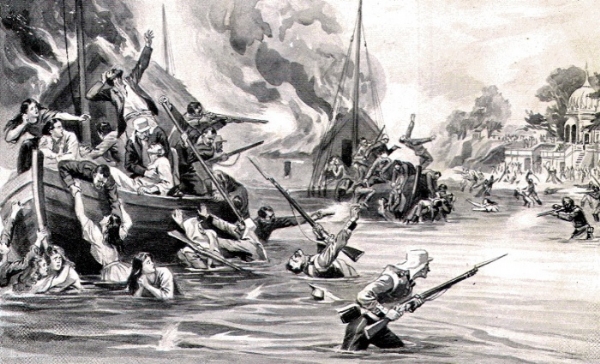
By 8:00 AM, the British reached Satichaura Ghat, where approximately 40 boats had been arranged for their journey. These boats belonged to a local boatman, Hardev Mallah. However, the British soon realized that the boats had been deliberately positioned high in the mud, making it difficult to board and set them adrift.
Although there is debate about whether Nana Saheb had pre-planned the massacre, most of the departing Europeans were attacked by the rebels. The British later accused Nana of orchestrating the attack, but no conclusive evidence was found to support these claims. Some historians argue that the attack resulted from confusion rather than a deliberate strategy.Nana Saheb did not approve of their killing.
Massacre at Satichaura Ghat became one of the most infamous events of the 1857 uprising, deepening hostilities between the British and Indian rebels. It led to brutal British reprisals, which fuelled further violence across northern India.
The Consecration of Nana Saheb
On 1 July, following the advice of astrologers, Nana Saheb was consecrated as Baji Rao's heir in a grand ceremony marked by a 21-gun salute.
Meanwhile, Nana Saheb’s army had swelled to over 20,000 soldiers. The presence of such a large force in Kanpur caused unrest among the local citizens, exacerbating sectarian tensions.
British Forces Advance on Kanpur
Nana Saheb appointed a tawaif (nautch girl) named Hussaini Khanum, also known as Hussaini Begum, to oversee the captives' well-being. He sought to use the prisoners as bargaining leverage against the East India Company. However, on 9 July, Nana received alarming news—Major Sydenham Renaud’s force of 700 troops was advancing along the Grand Trunk Road, punishing Indian villages along the way. Additionally, General Henry Havelock was leading a larger British force from Allahabad, comprising approximately 1,200 British soldiers, 150 Sikh troops, 30 irregular cavalrymen, and six cannons.
Despite Nana’s demand that the British retreat to Allahabad, the Company forces continued their advance. Nana sent an army to confront Major Renaud, but they encountered General Havelock’s troops at Futtehpore on 12 July. The rebel forces, unable to match the firepower of British artillery and Enfield rifles, retreated. During the battle, Tatya Tope’s elephant was killed by a cannon shot, and General Havelock's forces secured a decisive victory.
Further Battles and British Gains
In an attempt to halt the British advance, Nana dispatched another force under his brother, Bala Rao. On 15 July, Bala fortified his position at Aong, positioning two cannons behind walled gardens to block the British approach. However, British scouts detected the trap, and the Battle of Aong ensued. Major Renaud led the charge but was severely wounded and later succumbed to his injuries.
Bala Rao retreated beyond the Pandu River, securing the stone bridge to prevent further British advancement. However, Indian villagers sympathetic to the British informed Havelock, who executed a flanking manoeuvre through Maharajpore village. Nana Saheb himself arrived with additional artillery, but under heavy British fire, the rebel lines collapsed. Havelock’s son, Henry, performed a daring act by charging a cannon just before it was fired, saving his troops. He was later awarded the Victoria Cross for this bravery.
On 16 July, Havelock’s forces continued their march toward Bithur, rescuing William Jonah Shepherd, a prisoner from the siege, who provided valuable intelligence.
The Fate of the Bibighar Captives
As the British closed in on Kanpur, Nana Saheb and his advisors, including Tatya Tope and Azimullah Khan, debated the fate of the prisoners at Bibighar. Some advisors, angered by British reprisals against Indian villagers, advocated for their execution. Azimullah Khan argued that killing the captives would eliminate the British army’s incentive to advance. However, Nana’s female relatives strongly opposed the massacre, even going on a hunger strike in protest, but their pleas were ignored.
The events at Bibighar and Satichaura Ghat shaped the course of the War of Independence, intensifying the violence on both sides.
Recapture of Kanpur by the British
British Forces Arrive at Kanpur
On 16 July 1857, the East India Company forces reached Kanpur. Upon hearing of their approach and the news of the Bibighar massacre, the local population fled. In the early hours of 17 July, the British arrived at Wheeler's entrenchment. Two sympathetic Indians informed General Havelock about the massacre at Bibighar and that Nana Sahib had taken position at Ahirwa village. The British forces launched an attack on Nana's troops and emerged victorious. In response, Nana destroyed the Kanpur magazine, abandoned the city, and retreated to Bithur.
Nana Sahib's Escape and British Pursuit
On 19 July, Havelock resumed military operations and marched towards Lucknow, leaving Colonel Neill in command at Kanpur. Nana Sahib had already escaped with an army of 12,000 men. Major Stevenson led a detachment of Madras Fusiliers and Sikh soldiers to Bithur, where they occupied Nana Sahib’s palace without resistance. Despite several British search efforts, Nana Sahib managed to evade capture. A detachment of the 7th Bengal Infantry nearly apprehended him, but he escaped just in time, leaving behind a silver-mounted sword, which later became a prized artifact.
Battle of Bithur and Rebel Counterattacks
By 13 August, approximately 4,000 rebels had regrouped in Bithur and threatened Havelock’s supply lines at Bashiratganj. The British chased them from their positions, but the rebels returned, now reinforced by the experienced Gwalior contingent and sepoys from the 42nd Infantry. In the ensuing battle at Bithur, British forces, including the Madras Fusiliers, Highlanders, and Sikh troops, launched a decisive charge, forcing the rebels to retreat and capturing their artillery. The British suffered over 50 casualties in battle, with an additional 12 soldiers succumbing to heat stroke. After securing Kanpur, Havelock resumed his march to Lucknow, where his forces broke through the rebel lines to reach the besieged Residency on 25 September.
Sir Colin Campbell Takes Command
With Havelock’s forces engaged in Lucknow, Sir Colin Campbell was placed in charge of British operations in the region. Kanpur remained under British control, but rumors persisted about Nana Sahib’s whereabouts. Some believed he was attempting to join Tatya Tope in Fatehpur Chaurasi, while others speculated he had sought French assistance in Chandernagore. On 9 November, Campbell departed for Lucknow, leaving a garrison of 500 British and Sikh soldiers under the inexperienced Major General Windham.
Tatya Tope’s Attempt to Recapture Kanpur
Tatya Tope launched a counteroffensive to retake Kanpur in November 1857. Arriving with 6,000 soldiers and 18 cannons, he continued to attract new recruits. On 24 November, Major General Windham advanced to meet Tatya Tope ’s forces, but the British were defeated and forced to retreat to their fortified barracks, abandoning their wounded and dead. By 27 November, Kanpur was back under Peshwa control, and British lines came under bombardment. Wounded British officers left on the battlefield were hanged from the same banyan tree where Neill had previously executed suspected rebels. Tatya Tope successfully blocked all routes west and northwest of Kanpur.
British Counteroffensive and the Final Defeat of the Rebels
Bala Rao, Jwala Prasad, and Rao Sahib set up their headquarters in the European quarter of Kanpur. However, it remains unclear whether Nana Sahib and Azimullah Khan were with them or had stayed behind in Bithur. Meanwhile, Sir Colin Campbell returned from Lucknow and regrouped his forces at Allahabad. By 5 December, he had reached Kanpur with reinforcements.
Tatya Tope had also strengthened his army, now commanding over 14,000 men, including the elite Gwalior contingent and 40 cannons. On 6 December, the British launched an artillery bombardment, and General Mansfield led a flanking attack, overwhelming the rebel army. By 7 December, British forces reached Bithur palace, but Nana Sahib had already fled, taking much of his treasure with him. However, the British seized valuables worth millions of rupees, including guns, elephants, silver howdahs, and camels. Following extensive excavations for hidden wealth, they set Nana Sahib’s palace ablaze, marking the end of his stronghold in Kanpur.
Nepal Connection-Seeking Refuge in Nepal
By early 1859, it was widely believed that Nana had retreated to Nepal. Letters written by Nana and Bala, requesting terms of surrender, were sent from Nepal to the British. Historian Perceval Landon recorded that Nana Sahib lived in western Nepal, in Thapa Teli near Ririthang, under the protection of Sir Jang Bahadur Rana, the Prime Minister of Nepal. The last confirmed letter written by Nana, bearing his seal, was dated 13 May 1859. His family was also granted refuge in Dhangara, eastern Nepal, in exchange for precious jewels.
By February 1860, British intelligence reported that Nana’s wives were living near Thapathali in Nepal, while he himself resided in the interior, remaining distrustful of the Rana leadership. After this, Nana Sahib vanished from historical records.
Conflicting Accounts of Death
In October 1860, the British resident in Kathmandu received information that Nana had died on 24 September due to malaria. Some British records also claimed that he had been killed by a tiger during a hunting expedition on 24 September 1859, although there is no conclusive evidence that he was in Nepal at that time. His ultimate fate remains uncertain, as does that of his brother Bala Rao, who was also reported to have died from fever in the Nepalese jungles.
Rumours of his capture persisted until 1888, with several impostors presenting themselves as Nana Sahib. Reports even suggested he had travelled to Constantinople (modern-day Istanbul), but these claims were never substantiated.
Sihor Connection: The Ascetic Theory-Evidence of a Life in Gujarat
In the 1970s, two letters and a diary were discovered, suggesting that Nana Sahib may have lived out his days in Sihor, a coastal town in Gujarat, under the identity of an ascetic named Yogindra Dayanand Maharaj. The letters, written in Old Marathi and signed "Baloo Nana," were addressed to Harshram Mehta, Nana’s former Sanskrit teacher.
Belsare’s Account: A Spiritual Transformation Nana’s Shift from Warrior to Sage
K.V. Belsare, in his book on the Maharashtrian saint Brahmachaitanya Gondavlekar Maharaj, claimed that Nana Sahib fled to Naimisharanya (a forested area near Sitapur, Uttar Pradesh) after the final battles with the British. According to Belsare, Nana met Brahmachaitanya Maharaj, who assured him of safety. He lived there from 1860 until his death in 1906.
According to Belsare, Nana Sahib initially struggled to accept his defeat and the loss of his kingdom. However, Brahmachaitanya Maharaj explained that while fighting the British differed from battling the Mughals, the next phase of India’s struggle for independence would be led by the educated middle class who understood the British language and systems. Maharaj advised Nana to focus on an "internal war"—a spiritual journey rather than an armed War of Independence. Though it took time for Nana to accept this perspective, he gradually embraced the path of asceticism.
Enduring Mysteries Of Indian History
The true fate of Nana Sahib remains one of the enduring mysteries of Indian history. His disappearance fuelled numerous theories, ranging from his death in Nepal to a secret life in Gujarat or Uttar Pradesh. Despite extensive British efforts to capture or confirm his fate, Nana Sahib evaded all attempts at discovery, cementing his place as a legendary figure in India’s First War of Independence.
Aftermath of the Events of 1857
Fate of Nana Saheb’s Close Associates
Following the British suppression of the 1857 uprising, Nana Saheb’s key commanders and associates faced grim consequences. His brigadier, Jwala Prasad, was captured and executed in Kanpur on 3rd May 1860. During his trial, he claimed to have witnessed Nana Saheb’s cremation in Nepal, though this account remains disputed.
Tatya Tope, Nana’s trusted military leader, was betrayed in April 1859 by Man Singh, the Raja of Narwar, who handed him over to the British. He was executed on 18th April 1859. Similarly, Nana’s nephew, Rao Sahib, an active participant in the War of Independence, was captured in 1862. He was hanged at Satichaura Ghat on 20th August of the same year.
The Role of Hussaini Begum and Other Figures
Hussaini Begum, believed to have been a key figure in Nana Saheb’s court, reportedly fled to Nepal with his entourage and disappeared from historical records.
However, her bodyguard, Sarvur Khan, who had carried out the infamous Bibighar massacre, was arrested in February 1858. Another courtier, Muhammed Ali Khan, who had previously travelled to England with Azimullah Khan, was also captured.
During his imprisonment, Khan provided detailed information about the 1857 events, blaming Hussaini Begum for orchestrating the Bibighar massacre. He claimed she had personal grievances against the British, which led her to order the execution of the captives. Both Sarvur Khan and Muhammed Ali Khan were later executed.
The Mysterious Fate of Azimullah Khan and Baba Bhutt
Azimullah Khan, Nana Saheb’s political advisor, and Baba Bhutt were reportedly seen near Kolkata after the uprising, but their ultimate fate remains uncertain. Some accounts suggest that Baba Bhutt died of illness, while others claim that Azimullah succumbed to smallpox in Bengal.
Deaths of British Military Leaders
Several British officers who played a key role in the suppression of the War of Independence also met their end soon after. General James Neill was killed in action during the relief of Lucknow on 25th September 1857. Major General Sir Henry Havelock succumbed to dysentery in November 1857, shortly after rescuing the Lucknow garrison. Sir James Outram passed away in France in March 1863, while Sir Colin Campbell, later ennobled as Baron Clyde, died in Kent in August 1863.
A Hero of the 1857 War of Independence-Leadership in the Uprising: Military Assessment
Nana Saheb Peshwa, played a significant role in the Indian War of Independence of 1857. His contributions, leadership, and the military conduct of the uprising he led had a profound impact on the course of Indian history.
Here's a breakdown:
He was a master of warfare who led the 1857 war of independence from Peshawar in the north to Rameshwar in the south.
Inspiring Uprising All Over India
Nana Saheb went to Lucknow, Varanasi, Allahabad, Buxar, Janakpur, Gaya, Parasnath, Jagannathpuri, Panchavati, Rameshwar, Dwarka, Nasik, Abu, Ujjain, Mathura, Badrinath and Kamrup. He sent hundreds of letters to South India, inspiring people to fight. Posters were pasted everywhere, offering rewards for killing British officers! Red 'lotus' and 'chapatti' were used as symbols of war message.
As the adopted son of the last Peshwa, Baji Rao II, he was denied his rightful pension by the British under the Doctrine of Lapse, which fuelled his resentment against colonial rule. His leadership was instrumental in mobilizing forces, particularly in Kanpur, which became a significant centre of resistance.
Military Strategy and Conduct
Despite the technological and organizational superiority of the British forces, Nana Saheb Peshwa and his followers fought with great courage and determination. He effectively utilized guerrilla tactics and conventional military strategies to challenge British rule. Under his command, Indian forces captured Kanpur, which was seen as a major victory in the early stages of the uprising.
His military decisions, including strategic alliances with other leaders like Tatya Tope and Rani Lakshmibai, showcased his tactical acumen. However, the lack of sustained coordination among different rebel factions ultimately weakened the movement.
The queen of Jhansi attained martyrdom in the war. Tatya Tope was hanged. Kunwar Singh and Azimullah Khan died.
Even in such adverse times, Nana Saheb continued his struggle in the forests of the Terai of Nepal.
Contributions to the 1857 War of Independence:
Leadership in Kanpur:
Nana Saheb took command of the War of Independence in Kanpur, a crucial British garrison town. He capitalized on the widespread discontent against British rule.
He led the siege of Kanpur, forcing the British garrison to surrender.
Symbol of Resistance:
He became a powerful symbol of resistance against British colonial rule. He declared himself Peshwa, which for many, was a powerful symbol of the rejection of British rule, and a call to return to pre British rule. His participation gave the War of Independence momentum and inspired many others to join the fight.
Coordination and Mobilization:
He played a role in coordinating the uprising, working with other leaders like Tatya Tope.
He was proclaimed Peshwa, with the aid of Tatya Tope, after the capture of Gwalior
Providing Leadership:Mobilizing Forces:
Nana Saheb was able to rally significant numbers of rebel soldiers.
He provided leadership at a critical time, filling a power vacuum and providing direction to the rebellious sepoys.
Key Battle Locations:
Kanpur (Cawnpore): This was the central location of Nana Saheb Peshwa's activities, including the siege of the British entrenchment and subsequent events.
Later on there was movement of Nana Saheb and his forces toward areas like Gwalior, in conjunction with other rebel leaders. He eventually retreated towards the Nepal hills.
Military Conduct and Effect on History:
The siege of Kanpur was one of the most intense and violent episodes of the 1857 War of Independence.
The events that occurred in Kanpur left a lasting impact on Anglo-Indian relations. The brutality of the conflict on both sides deepened the divide between the British and the Indian population.
The 1857 War of Independence, including Nana Saheb's role, marked a turning point in Indian history. It demonstrated the widespread resentment against British rule and fuelled the growing movement for Indian independence.
The uprising, despite its ultimate failure, forced the British to reassess their policies and led to significant changes in the administration of India.
In summary, Nana Saheb's contribution to the 1857 war of independence was substantial. He acted as a key leader in the Kanpur region, and his actions helped to increase the anti British sentiment that was vital to the independence movement.
Army Strengths
Nana Saheb Peshwa's Army:
Estimating precise army strengths is difficult, but his forces grew significantly during the War of Independence.
He commanded a mix of rebel sepoys and his own followers.
Reports indicate that by mid June of 1857, his forces numbered between 12,000 to 15,000 soldiers.
Initially it was planed he would assemble 1,500 soldiers to protect the British.
British Army:
The British forces in India consisted of both British regiments and sepoys (Indian soldiers serving the British East India Company).
Their strength varied across different locations and fluctuated with reinforcements.
In Kanpur, the British forces were initially entrenched in a relatively small area, and were under supplied.
Analysis As A Military Leader
Nana Saheb Peshwa: The Architect of India's First War of Independence
The 1857 uprising was India's First War of Independence, where people from all regions, castes, and religions united against British rule. The man who played a pivotal role in making this happen was the great warrior, Nana Saheb Peshwa.
The Challenge: A Divided India vs a Powerful British Empire
The British had a smaller force but possessed modern weaponry, a well-organized army, an efficient communication system, and an excellent intelligence network. In contrast, the Indian rulers were deeply divided by caste, creed, language, state, and religion. Their weapons were outdated, and many Indian leaders sought personal gains by appeasing the British. Some were even willing to betray their own people to gain British favour.
To mount an effective resistance, India needed a leader who could unite its people. The most prominent figure to emerge was Nana Saheb Peshwa, a representative of the Maratha Empire—the last great Indian power before the British consolidated their rule.
Organizing the Uprising: A Call for Unity
With Tatya Tope by his side, Nana Saheb Peshwa travelled extensively across India, spreading the message of War of Independence. He urged Indian rulers and soldiers to unite, emphasizing that together, they could defeat the British.
To strengthen the movement:
Information was circulated encouraging revolt.
Rewards were promised for soldiers who eliminated key British officials.
Thousands of letters were sent to rally support.
A nationwide uprising was planned for May 31, 1857, to ensure the British were caught off guard.
Premature Revolt: The Costly Mistake
However, the plan was disrupted when Mangal Pandey was executed on April 8, 1857. His martyrdom triggered an early outbreak of War of Independence among soldiers. This premature uprising compromised the strategic advantage, as the British were able to respond before the full-scale revolt could take place.
Legacy of the 1857 War-Impact on India's Struggle for Independence
Although the uprising of 1857 was ultimately suppressed, Nana Saheb Peshwa's contribution left a lasting impact on India's fight for freedom. The War of Independence exposed the vulnerabilities of British rule and inspired future generations of revolutionaries. The courage and sacrifice of Nana Saheb Peshwa and his compatriots fuelled the nationalist movement, laying the foundation for India’s eventual independence in 1947. His legacy remains a symbol of defiance against colonial oppression and a testament to the spirit of resistance among Indian freedom fighters.
Inspired by Nana Saheb Peshwa, Vasudev Balwant Phadke, Chaphekar brothers, Swatantrya veer Savarkar, Bhai Kotwal, Hiraji Patil etc. showed bravery.
On the occasion of Nana Saheb's bicentenary, we pay tribute to this great son of Mother India
Nana Saheb’s Legacy in Independent India
Following India’s independence in 1947, Nana Saheb was recognized as a freedom fighter. In his honor, the Nana Saheb Park was constructed in Kanpur, commemorating his and his brother Bala Rao’s contributions to the struggle against British rule.
The 1857 War of Independence ignited a national spirit that proved the British were not invincible. This movement laid the foundation for future struggles, ultimately leading to India's freedom on August 15, 1947—fulfilling Nana Saheb Peshwa’s dream of an independent India.
On the occasion of Nana Saheb Peshwa’s bicentenary, we pay tribute to this great son of Mother India. May his leadership during challenging times continue to inspire generations of Indians.
--
Bharati Web


